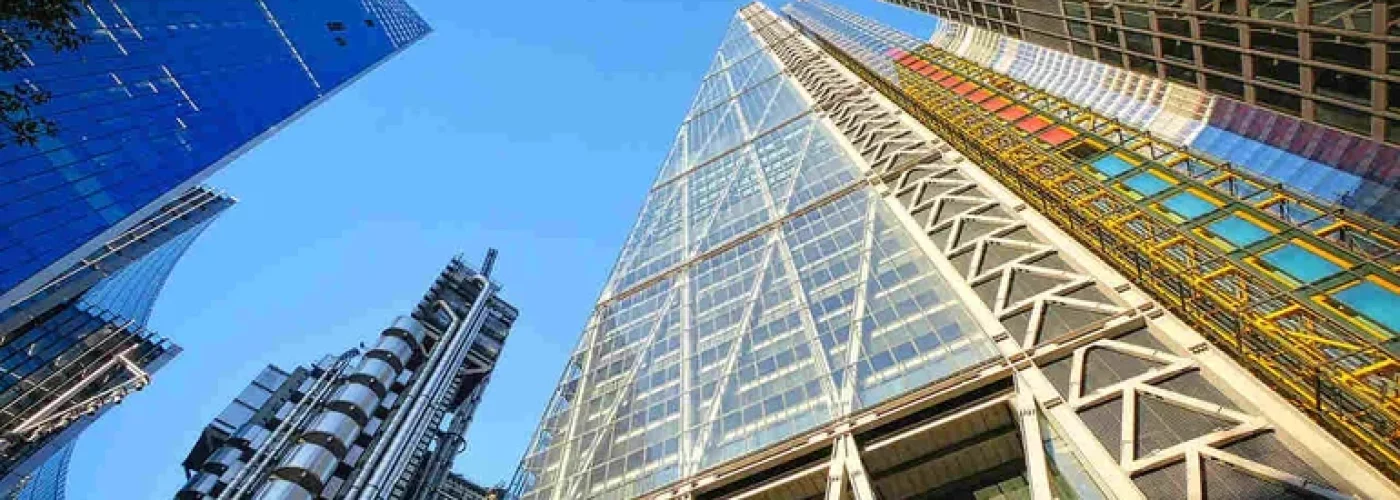Written by Charlie Brain, Senior Consultant, Water Hygiene Centre

Commercial Offices in the UK have experienced an interesting life since the disruption caused by the Covid-19 pandemic. The usage of these types of buildings has perhaps changed from the typical 9-5 way of life, therefore the way they are managed may also need to change. This blog explores the risks that water poses in these types of buildings and in particular the risk of Legionella bacteria.
What is Legionella?
Legionella bacteria are common in natural water sources such as rivers and lakes, they may also be found in purpose-built water systems, such as hot and cold water systems in a commercial office building. It is these types of “man-made” water systems that pose the greater risk to humans, as the conditions for Legionella proliferation and exposure are increased.
Commercial offices are those buildings used by differing types of businesses as a place of work. Standard office spaces are commonly divided into workspaces, kitchens, restrooms, and service rooms such as cleaners’ cupboards and plant rooms.
What are the requirements to reduce Legionella Risk?
All commercial building operators in the UK have duties under the Health and Safety at Work etc Act 1974 (HSWA) which extends to risks from Legionella bacteria, that may arise from work activities.
As the duty holder in control of a commercial office, you must;
- Identify and assess sources of risk;
- Prepare a written scheme for preventing or controlling the risk
- Implement, manage, and monitor precautions
- Keep and maintain records
- Appoint a Responsible Person
Who is Responsible?
Whether you are the landlord/owner or tenant, the actions above must be undertaken, but like many commercial offices, these tasks may be undertaken by different parties. Unless a “fully maintained” lease is in place it is ultimately the responsibility of the landlord or owners to manage the building, this includes the water systems and other Health and Safety risks (including Legionella).
If you are a tenant of a building (without a fully maintained lease) and are responsible for your employee’s health and safety, it would be advisable to seek evidence of compliance from your landlord.
In some cases, fully maintained leases exist between landlords and tenants, that transfer responsibility from the landlord to the tenant for some or all the required tasks. In some cases, the tenant may feel they require more control over health and safety matters and undertake the tasks listed above themselves.
Whatever arrangement is in place, records of work carried out to manage Legionella need to be kept up to date and readily available for inspection.
Types of Water Systems
Commercial office buildings range in size and complexity. It is fair to say, that the larger and more complicated a building and the water system is, the greater risk of Legionella is presented, which in turn, requires more elaborate control methods.
The types of water systems found at commercial office buildings include;
- Cold water systems – such as mains cold water, cold water storage cistern, rainwater systems.
- Hot water systems – such as central calorifiers/direct gas water heaters/plate heat exchangers, large recirculating systems, point of use water heaters, solar-heated systems, trace heated systems, combi boilers.
- Air conditioning systems – such as evaporative cooling, air handling units, split units, portable A/C units.
- Other systems – such as fire hose reels, sprinkler systems, garden hoses, ornamental water features.
Each water or risk system requires a Legionella risk assessment and a resulting control scheme established. A control scheme will include monitoring, inspection, cleaning, and disinfection frequencies, so the more complex a water system is, the more controls it usually requires.
Water System Usage
One of the more topical issues regarding Legionella in commercial office buildings is water system usage. These types of buildings have experienced different levels of use since COVID-19, ranging from complete shutdown to reduced staffing levels and hybrid working styles. This impacts the water system as less water is being used daily, thus creating reduced flow, stagnation, and possible biofilm problems. The Legionella Control Association has reported that lockdowns have increased the rate of positive Legionella sample results. So, if your building has seen a different level of use, has the Legionella risk assessment been reviewed? Has the amount of stored water been assessed? Have different control measures been implemented?
Other Considerations
Scalding – Has a scalding risk assessment been carried out? Unnecessary installations of thermostatic mixing valves (TMV’s), especially in staff areas, can increase the risk of Legionella colonisation due to their complexity and maintenance requirements. The scalding protection should be applicable to the risk.
Hot water boilers – Having replaced the traditional kettle, these installations can affect how much the sink taps are used. If drinking water dispensers are also used, is the sink cold tap being used at all? If a dishwasher is present, what are you using the hot tap for? The use of all outlets requires regular review.
Drinking water dispensers – as mentioned above, these have replaced the humble cold-water tap, decreasing their use. If desired, mains-fed units are preferred to bottle-fed types, due to the quality of water supply, maintenance, and cleaning practicalities. If installed, mains-fed units should be sited as close as possible to a regularly used outlet to assist turnover. As with any commercial premises and health and safety matters, the starting point is always risk assessments. This will inform the landlord or building owner of any gaps in Legionella and water hygiene management and help form a plan to actively manage any Legionella risks identified.
Building, Design & Construction Magazine | The Choice of Industry Professionals





